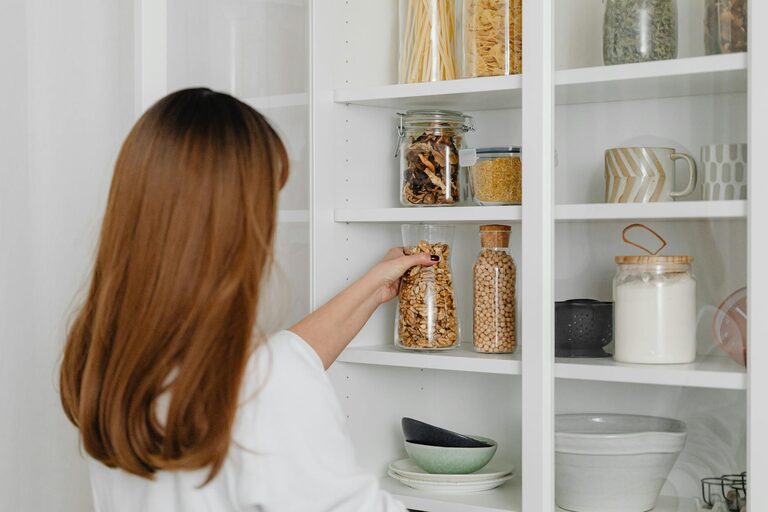Keeping a tidy fridge and pantry can transform your cooking experience, save money, and reduce food waste. A well-organized kitchen makes it easier to find ingredients quickly and keep track of what you already have. Whether you have a spacious pantry or a small one, maintaining order is achievable with some straightforward habits and smart storage solutions. In this post, we’ll explore practical ways to keep your fridge and pantry neat and organized.
Why It’s Important to Keep Your Fridge and Pantry Tidy
Before diving into organization tips, it helps to understand why keeping these kitchen areas tidy is so valuable:
– Easier Meal Prep: Know exactly where everything is so you can quickly grab what you need.
– Reduce Food Waste: Spot foods that are nearing expiration and plan to use them.
– Save Money: Avoid buying duplicates because you forgot what you already had.
– Improve Hygiene: A clean fridge and pantry minimize odors and reduce the risk of spoilage or pests.
Now, let’s break down simple strategies to keep both your fridge and pantry in tip-top shape.
How to Organize Your Fridge
The fridge is a busy place, housing everything from fresh produce to leftovers. Here’s how to keep it orderly:
1. Clean Your Fridge Regularly
Start by emptying the fridge and wiping down shelves, drawers, and doors with a mild cleaning solution. Aim to clean your fridge thoroughly every 1 to 2 weeks. This not only removes spills and odor but also gives you a chance to check expiration dates.
2. Use Clear, Stackable Containers
Invest in clear storage containers or bins to group similar items. For example:
– One bin for dairy products like cheese and yogurt
– Another for lunch meats and deli items
– Separate containers for fruits and vegetables
Clear containers let you see contents at a glance, reducing food loss.
3. Store Food by Safety Guidelines
Keep your fridge organized by following general temperature zones:
– Top shelves: Ready-to-eat foods like leftovers, drinks, and deli meats
– Middle shelves: Dairy products such as milk, cheese, and yogurt
– Bottom shelves: Raw meat, poultry, and fish in sealed containers to avoid drips
– Crisper drawers: Fruits and vegetables (use separate drawers for each if possible)
– Fridge door: Condiments, juices, and other less perishable items
4. Label and Date Items
Use reusable labels or masking tape and a marker to write dates on containers. This simple step helps track freshness and encourages you to use older items first.
5. Avoid Overcrowding
Don’t stuff your fridge. Overcrowding blocks air circulation and makes it hard to keep items cold and fresh. If your fridge is too small, consider downsizing groceries or using a second fridge if space allows.
How to Organize Your Pantry
A tidy pantry makes cooking smoother and grocery shopping more efficient.
1. Empty and Sort
Take everything out of your pantry and sort items into categories such as grains, baking supplies, canned goods, snacks, and spices. Check expiration dates and toss anything expired or no longer needed.
2. Clean Shelves
Wipe down all shelves with a damp cloth and mild cleaner. Dry thoroughly before returning items.
3. Use Containers and Jars
Use clear, airtight containers or jars for dry goods like pasta, rice, beans, and cereals. Uniform containers create a neat appearance and protect food from pests.
4. Label Everything
Label containers clearly with item names and expiration dates if possible. This speeds up meal prep and helps family members find what they need.
5. Arrange by Frequency and Type
Place frequently used items at eye level or within easy reach. Group similar items together to create order. For example:
– Baking ingredients like flour and sugar on one shelf
– Breakfast cereals grouped in another area
– Snacks and treats in a kid-friendly zone
6. Utilize Door Space and Vertical Storage
If your pantry door has shelves or hooks, use them for small jars or spices. Consider adding vertical racks or spice organizers to maximize space.
7. Regularly Review and Maintain
Take a few minutes every month or before grocery shopping to scan your pantry, using older ingredients first and noting what you need to replenish.
Simple Habits to Maintain a Tidy Fridge and Pantry
– Shop with a list: Avoid impulse buys and duplicate purchases.
– Practice FIFO: “First In, First Out” means using older items before new ones.
– Clean as you go: Wipe spills immediately and tidy clutter weekly.
– Involve the family: Teach others where things go and get everyone to participate.
– Use technology: Apps can help track expiration dates and grocery lists.
Conclusion
Keeping a tidy fridge and pantry is easier than it seems and can make a big difference in your daily kitchen routine. By dedicating some time to cleaning, using smart storage solutions, and establishing habits like labeling and regular reviews, you’ll enjoy a clutter-free kitchen that saves time and money. Start today and enjoy the benefits of a clean, organized fridge and pantry!

